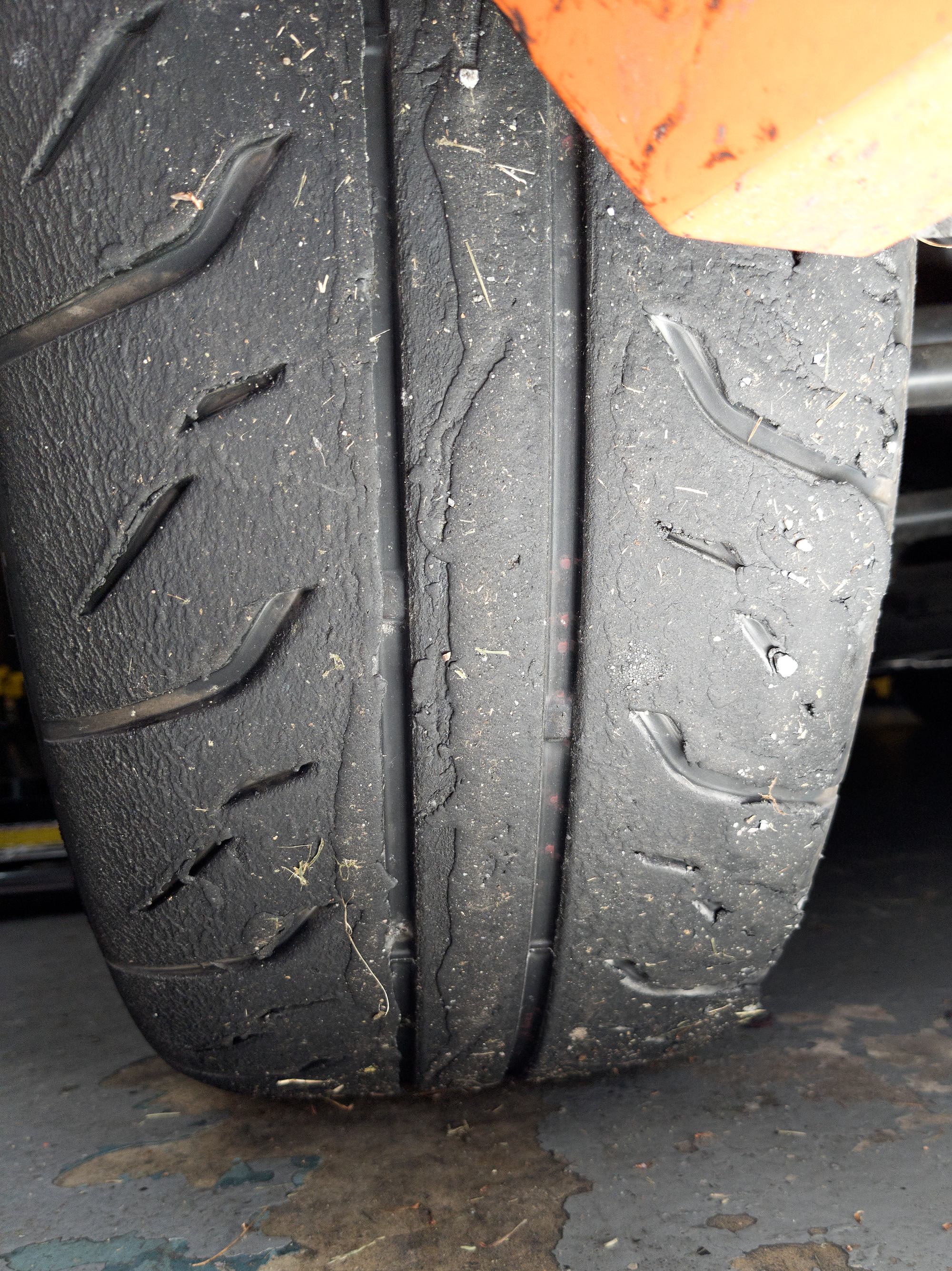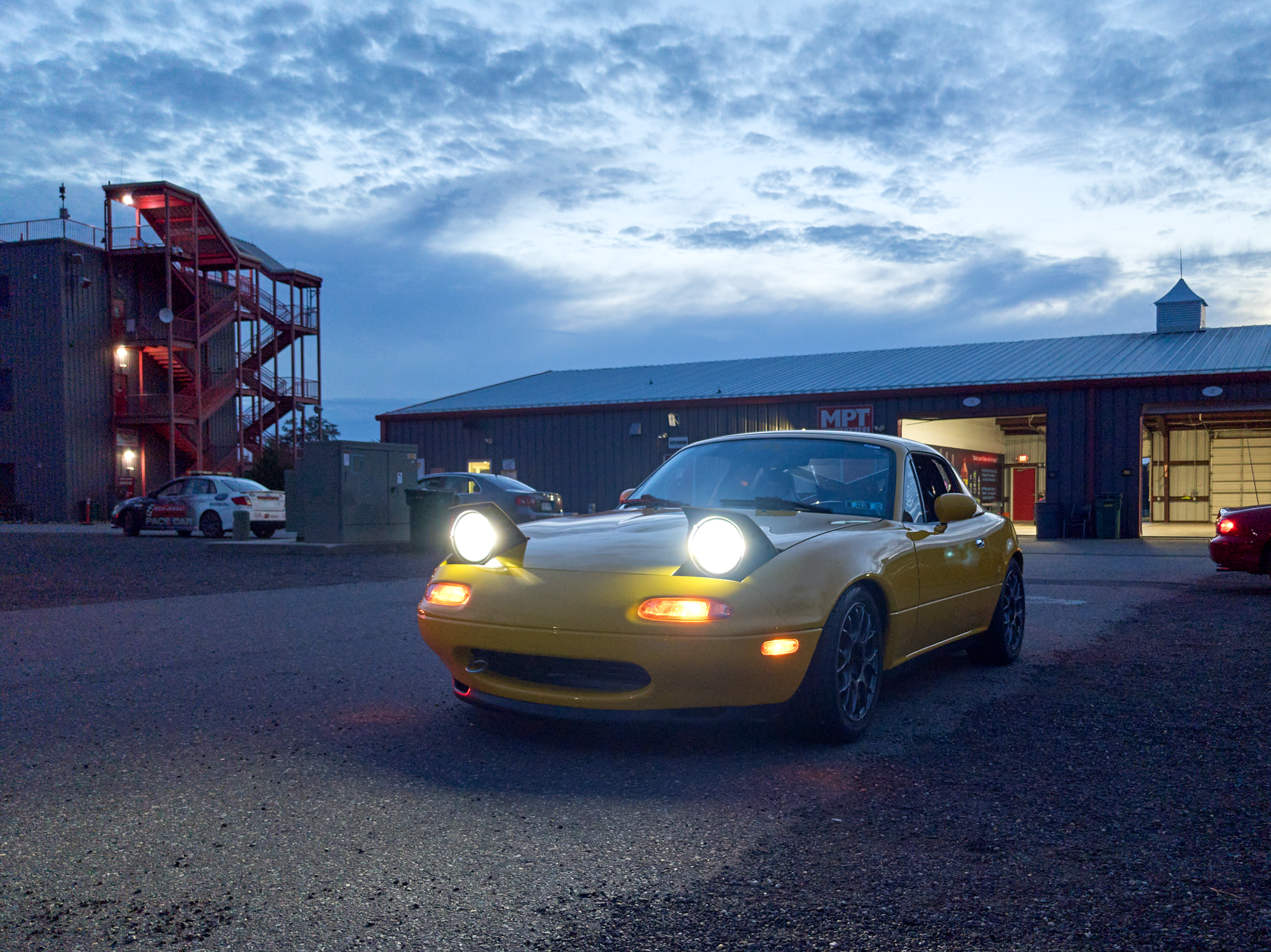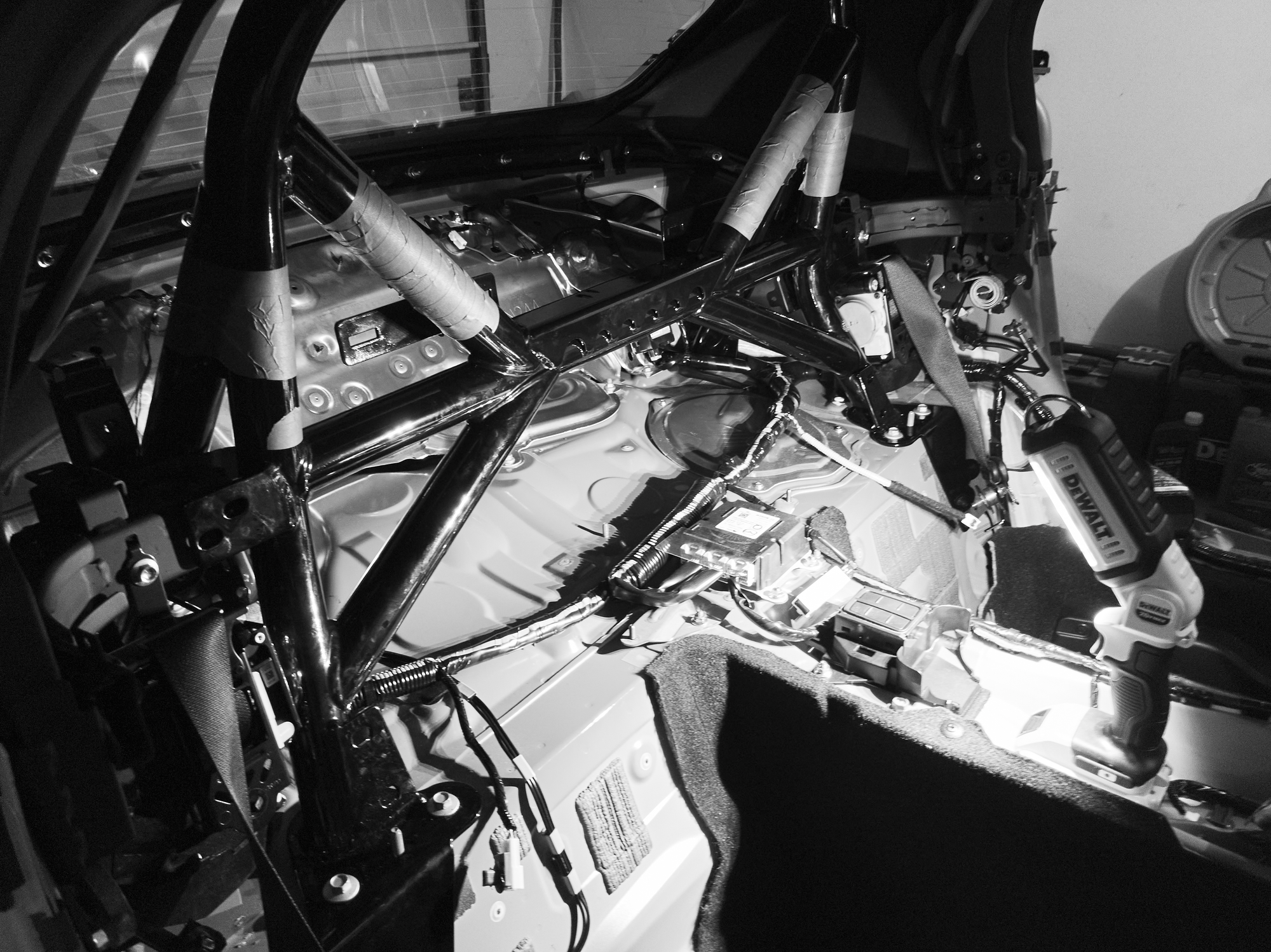Hello, I'm Beto, and I'm a sarariman...
As I mentioned in, well, the other post from this year, I started a new job back in January. This new gig has taken a lot more of my energy and free time than I care to admit, but I'll have to admit it nonetheless. So I had to be judicious with how I spent my hobby-time budget. Autocross, with its full day commitment for about 10 minutes of action (that is, if you're really slow), as fun as it is—and don't get me wrong, it is fun—was just not enough run time. So I put whatever little energy I could muster this year into track days. All said and done this amounted to two outings. But what my season lacked for in quantity, it really made up for it in quality.
I've discovered that track events are very much a sweet spot for me. While in autocross I was struggling to memorize random layouts so that by the 3rd out of 6 runs I was not getting lost too much, in track days I've got 20 minutes or thereabouts, each session. You spend the first session learning the track layout; really it takes three or four laps to learn the lines, the first time you've been to that track—I still remember the layouts for Summit Point and Thunderbolt by heart—and the rest of the time is spent getting faster. Then there's another 20-minute session. And another. And another. It's effing awesome. You're actually tired at the end—tired! Of driving fast! Think about that for a second! It's like going to a churrascaria, and you're hungry, and you eat delicious meat until you simply don't want to eat anymore. It's that awesome.

This year I participated in two events, both following similar formats. Summit Point runs Friday At The Track (FATT). The New Jersey Motorsport Park (NJMP) runs SCCA Track Night in America events. In both events the drivers were grouped according to experience: novice, intermediate, and advanced. Especially for novices, less so for the other groups, there are driver meetings around each session. Additionally, at Summit all but the advanced group drivers had instructors in the passenger seat for all sessions. Summit maintains a driver score card that gets updated by the instructors; as the scores improve the driver moves up through the groups. At NJMP there are no instructors in the car, and I believe the drivers simply chose which group they'd like to join.
There were four driving sessions at each venue, spaced throughout the day, each session 20 minutes long. The first session is a reconnaissance run, meant to learn the track, and no passing is allowed. The other sessions are ran at maximum performance.
Point-by Passing
Passing is restricted in this type of event. You're only allowed to pass at certain areas of the track, on the straights. And passing is strictly triggered by the slower driver. When you catch up with a slower driver he or she is expected to point with his or her hand out of the window indicating wether the pass is to take place on the right or the left of the slower car. You are not allowed to pass unless you see that signal.
This can occasionally lead to annoyances. A slower driver on a faster or more expensive car might feel a bit upset when they see a cheap MX-5 catching up with them. It's more frustrating on longer straights because high HP cars will be able to add distance there, only to slow your way through the twisty bits. Fortunately these drivers eventually get the message (or the blue flags) and will point-by. The novice driver meetings also do a good job going over these issues. And you can always pull into the pits to find a better track position so you're not stuck behind a driver or train of drivers for the whole session. There can also be overaggressive drivers that might try to pass in illegal areas of the track. Best course of action there is be aware, so you can avoid contact.
Autocross vs Track
Since I've only tried one other type of performance driving, autocross, this is a natural comparison for me.
For starters, the dynamic and pace of these events are completely different, and I don't mean just the car speeds. It's the nature of the pressure. In autocross the biggest pressure for me was the limited window of opportunity to put a good time on the board. You're trying to make it count from the get go. There will only be a small number of tries. No pace laps. So every failed try just adds to the pressure.
A track day is the complete opposite. The pressure is from the real risk of driving trying to find the limits of the equipment, at the maximum possible speeeds you can muster. So everything becomes more methodical. You take your time to learn the details of the track. You'll be doing probably over 50 laps by the end of the day, so you'll have a chance to improve on your time. Maybe outstanding autocross drivers do exactly this, but in much more compressed and efficient way. That's quite possible. I can say I was never anywhere near doing that when I was autocrossing.
At least to some extent, the limited window to perform is part of the autocross attraction: there are more skills besides driving that you will need to develop, and some thrive in that situation. Me, I enjoy the challenges of the track better than I do the challenges of autocross, but to each their own.
Right, but What's It Really Like?
I was driving as fast as I dared, braking as hard as I could, heel-toeing, putting down the Gs. Fun stuff. Taking a turn as hard as you can, using up all the curb into the apex, and holding on to grip as the car exits the turn, drifting more and more into the outside curb, and realizing that you've found the maximum, that you'll run out of road if you try to go any faster... that's one of the coolest things you can do on track. It's an absolute joy.
I'm a chicken, so the traction control was left on at all times, and as I've felt it kick in more than a couple of times I believe that's the right decision for the time being. Tracks have the unfortunate disadvantage over autocross when it comes to the consequences of leaving the race path. In most cases you might end up driving at speed over a grassy, rough dirt surface. Probably scary as hell, but that will likely not inflict any serious damage to the car. In other cases there are gravel traps and, worse comes to worst, tire walls.
The main straight is the part of the track where you can reach the highest speeds. At Summit Point that was about 110 MPH. I don't know my top speed at Thunderbolt because my data logging wasn't working, and I couldn't take my eyes off the road and risk missing my braking point. In most tracks, and certainly in these two, the main straight is followed by a sharp-ish right turn, which forces you to slow down quite a bit, and come down one or two gears. So the game is to see how fast you can go in the straight whilst ensuring that you can make the turn at the end. The tire wall is there for you if you play this game really badly.
Gear and Tech
One thing that really helps you get the most out of your day on the track is a good data logging and video recording setup. Mine sucked. For my first event I only had video (with terrible audio, at that). No data. On my last session at the end of the day the instructor brought over his GPS logger and mounted it on my car, and that's how I know what my best lap was. For the second event I was experimenting with my phone and a race logger app. The app did fine and it looks like it could be a good solution, but my mount setup was simply not trustworthy, so I took it down after the first session. The GoPro mounting position was pretty good, on the roll-bar, but the audio was absolutely terrible due to intensity of wind buffeting.
For next year I'm pretty set on getting a good stand-alone logging/analyzer package. I haven't decided which one yet, though I'm leaning towards the Garmin Catalyst product. I want something self-contained (i.e., I can look at the data without needing a laptop) and turn-key. I also want to refine my recording setup.
Better with Friends
Finally, bring friends if you can. It makes things more relaxed, and you also get to compare notes. You'll be spending the whole day on track, so it's nice to have someone to hangout with.
I got to chill with good friends at both events. At Summit Point with my friend Rick and his son, Garret. Rick drives a nice BMW Z4, Garret a sweet Mustang with a million HP, and a glorious exhaust note. At Thunderbolt, Nick (Mr. Nemesis) was there with his MX-5 Club to keep me company.



